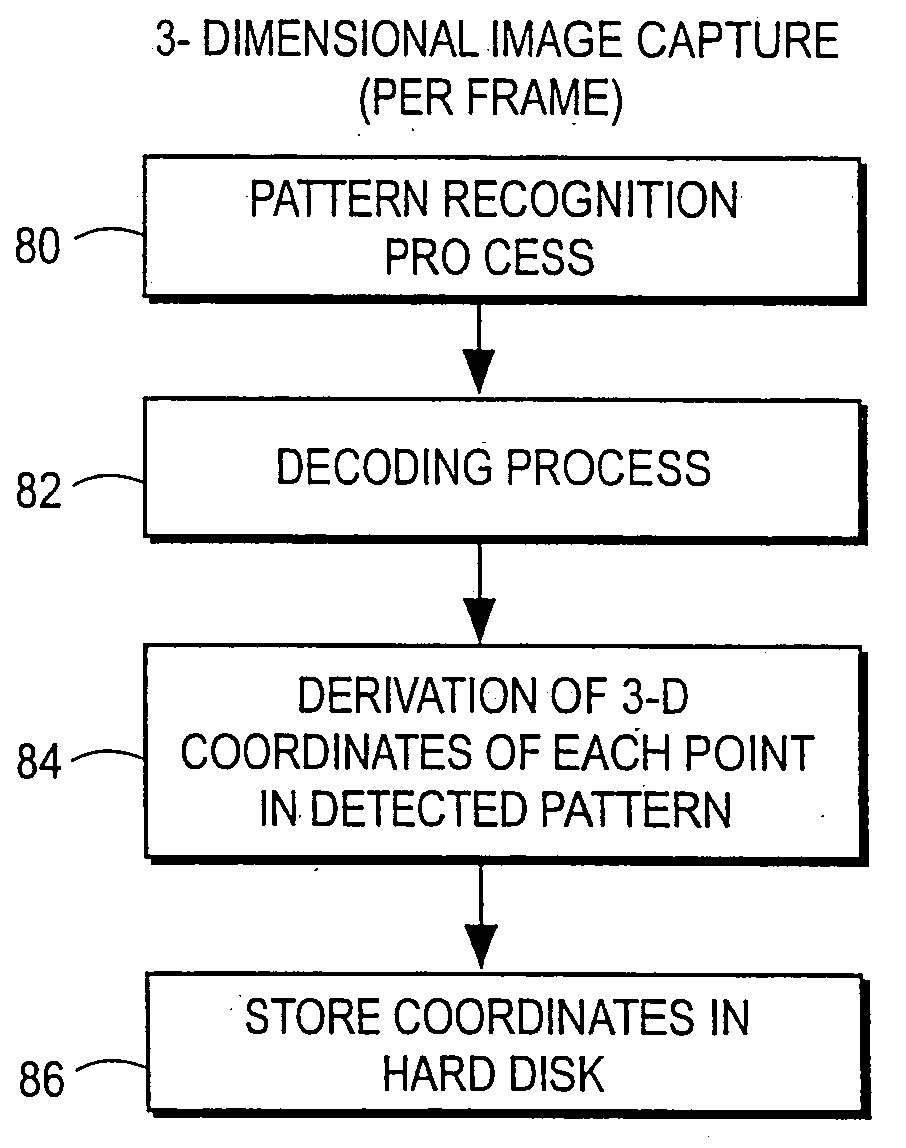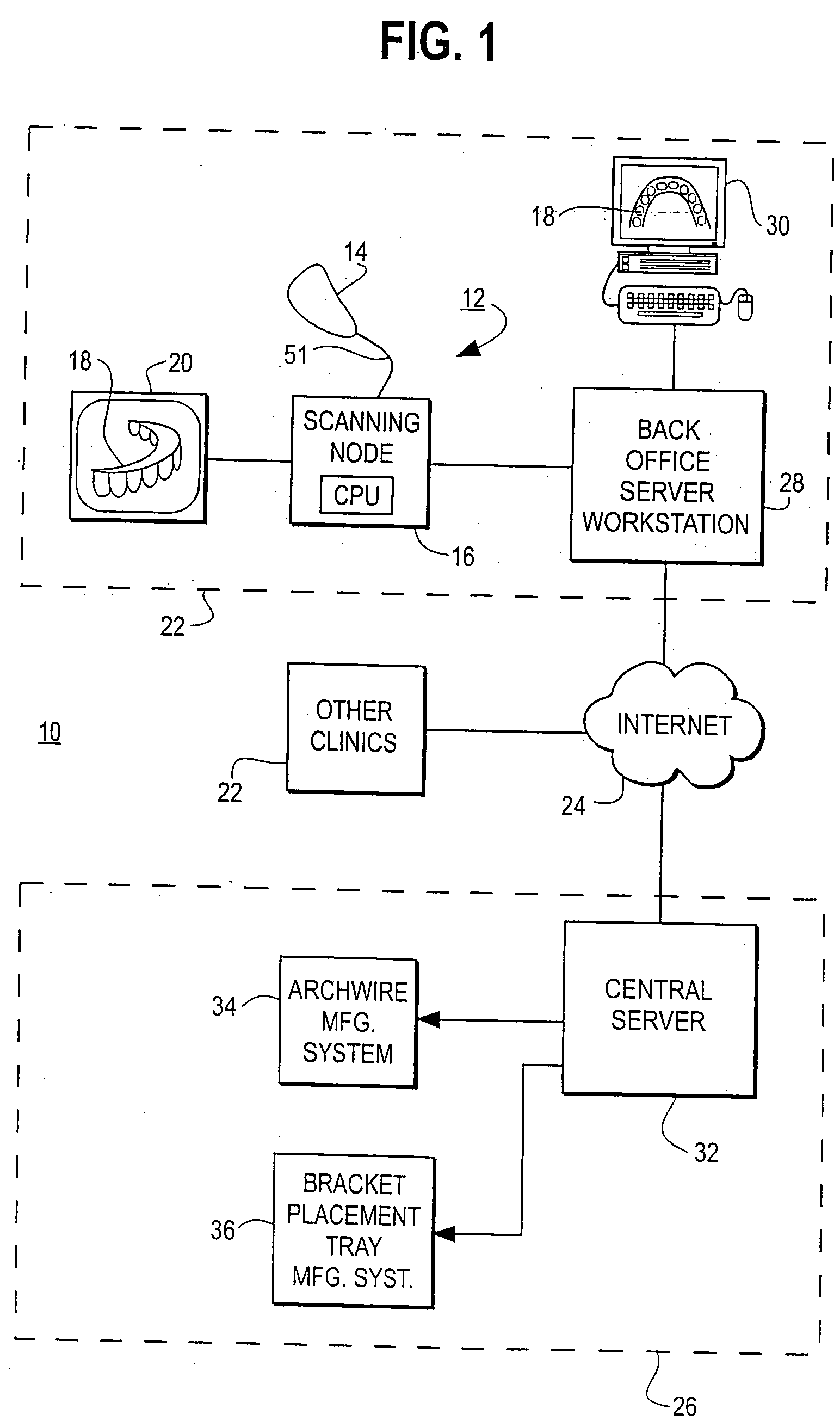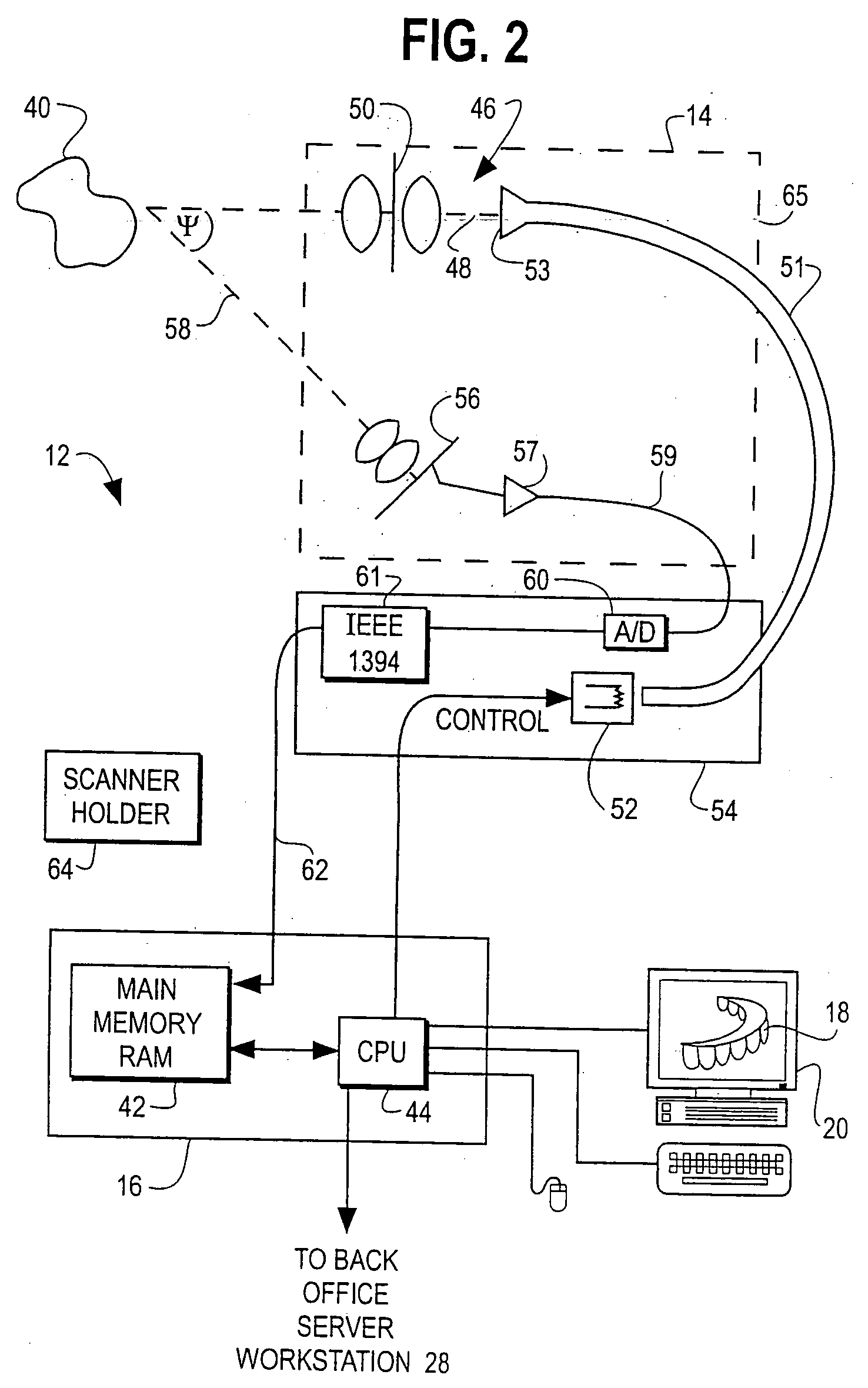Scanning system and calibration method for capturing precise three-dimensional information of objects
a three-dimensional information and calibration method technology, applied in the field of scanning systems, can solve the problems of reducing treatment time, requiring a large amount of time and labor, and requiring a large amount of adaptations and corrections, so as to reduce the amount of equipment and reduce the amount of processing time
- Summary
- Abstract
- Description
- Claims
- Application Information
AI Technical Summary
Benefits of technology
Problems solved by technology
Method used
Image
Examples
Embodiment Construction
30Part 1 Overview30Part 2 Three Dimensional Image Generation40Scanner Manufacture and Calibration43Pattern Recognition57Decoding59Derivation of 3-D Point Cloud Per Image64Part 3 Generation of Digital Impression71Entry point into registration71Frame to frame registration72Cumulative registration81Segment registration87Landmarking88Separation of teeth into individual tooth objects91Part 4 Introduction to Treatment Planning105Other Uses of Scanner108Claims111
BACKGROUND OF THE INVENTION
[0018] A. Field of the Invention
[0019] This invention relates generally to a scanning system that captures a series of two-dimensional images containing surface information of objects. The scanning system generates an accurate three-dimensional computer model of the object from the captured images. The invention also relates to method for deriving the three-dimensional information from the captured images.
[0020] The inventive scanning system and method can be used to analyze the surface and three-dimen...
PUM
 Login to View More
Login to View More Abstract
Description
Claims
Application Information
 Login to View More
Login to View More - R&D
- Intellectual Property
- Life Sciences
- Materials
- Tech Scout
- Unparalleled Data Quality
- Higher Quality Content
- 60% Fewer Hallucinations
Browse by: Latest US Patents, China's latest patents, Technical Efficacy Thesaurus, Application Domain, Technology Topic, Popular Technical Reports.
© 2025 PatSnap. All rights reserved.Legal|Privacy policy|Modern Slavery Act Transparency Statement|Sitemap|About US| Contact US: help@patsnap.com



